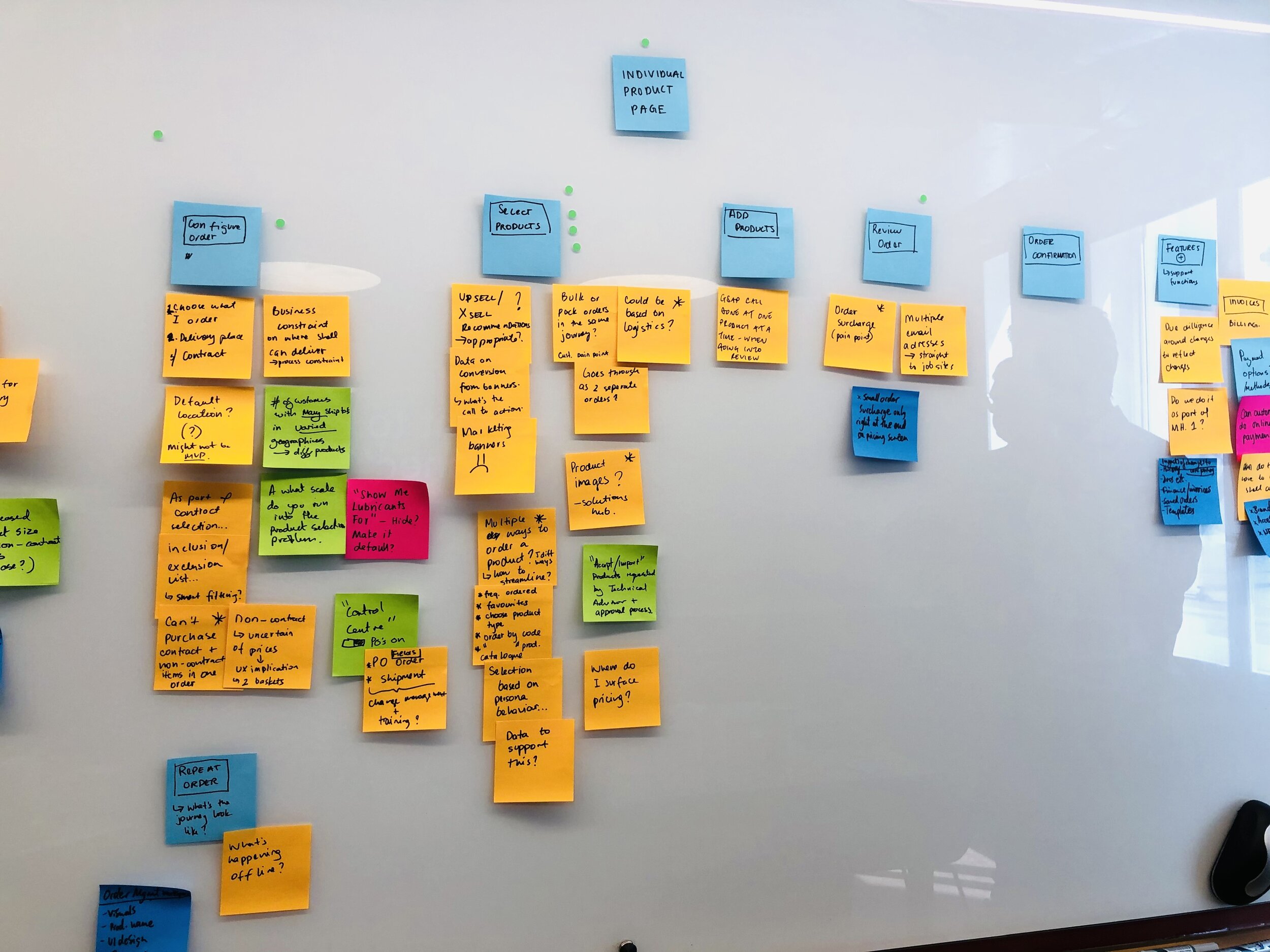Improving the e-commerce customer experience
MarketHub is Shell’s global B2B e-commerce platform providing commercial and industrial lubricants to customers across the globe. It generates $1.6b on a monthly average — that’s $19b per year.
Redesigning this legacy platform to increase customer value and stickiness is no small undertaking.
Customer centricity was central (pun intended) to laying the groundwork for MarketHub 2.0.
Service design, UX research & business analysis as part of
Shell’s MarketHub 2.0 team
Oct 2019 - Jun 2020
How might we redesign the e-commerce customer experience for one of the world’s largest oil & gas enterprises?
The Role
Understanding ‘As-Is’ customer journey through user interviews and journey maps.
User research & testing in multiple countries to validate customer behaviour hypotheses.
Synthesis of insights from primary and secondary user research materials.
Quantitative and qualitative data analyses of customer feedback surveys to understand pain and gain points.
Playback to senior stakeholders for feedback and features prioritisation in the backlog.
The Challenge
In addition to scaling the platform to markets in over 50 countries, the Shell MarketHub 2.0 team was challenged to design a consistent customer experience through a cohesive end-to-end e-commerce journey, while ensuring the specific needs of each local market are met.
Both market and user research early on in the design process were instrumental to prioritise epics and features, define the scope of the problem, and identify early hypotheses for prototypes.
The Outcome
With the groundwork laid for local market and user research in three countries — India, Turkey, and Indonesia — the Shell MarketHub 2.0 team were able to validate assumptions and include new functionality that had not been initially included in the original MarketHub platform.
The iterative nature of service design and UX research methodology also meant that stakeholders were more keenly aware of the fluid and agile nature of the problem — to bring Shell’s e-commerce customer experience on par with current global e-commerce standards (think Amazon, Apple, etc.).
The Process
Work redacted for NDA.
01. Creating user testing plans & scripts
Preparation: a considerable amount of time spent on user research is in the preparation prior to approaching any customers or users.
Understanding the local context of a market is key to delivering solutions that will meet the end-user’s requirements, and a host of interviewing techniques can be employed, e.g. ethnographic studies or open-ended questions. Well-prepared user testing scripts also ensured that testing sessions would cover all hypotheses to be tested within the short amount of time we had with users.
02. Virtual user testing with wireframe prototypes
Execution: Wireframe prototypes were used to test and validate hypotheses with both internal and external customers.
I ensured regular cadence with local market focal points to gather, manage, and test with a wide range of customer and business types to ensure the product we were building would bring value to all the customer personas identified.
03. Synthesising user insights
Evaluation: Following user testing sessions, insights into customer behaviours were synthesised, grouped into themes, and translated into user requirements following agile software development practices.
These requirements were then prioritised based on the aggregate desirability, viability, and feasibility of the features.
04. Collaborative ideation
Iteration: The product, design, and technical functions in the MarketHub 2.0 team would then discuss whether to pivot or persevere on specific features based on the user testing outcomes.
These discussions were also key to brainstorming new ways to approach a problem, which would feed into iterations of the product features and launch new test, learn, iterate cycles; ultimately coming to the most optimised solution.



